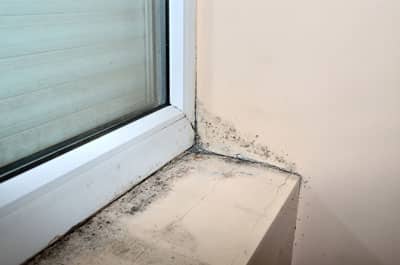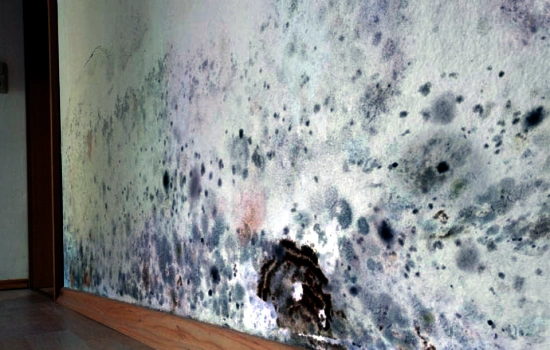Your Ultimate Overview to Message Mold Remediation Strategies
Navigating the realm of post-mold remediation strategies is a meticulous process that requires interest to detail and a detailed understanding of the details included. In the aftermath of mold infestation, recognizing how to properly get rid of the mold and mildew and avoid its reoccurrence is extremely important for keeping a healthy and balanced interior setting. From selecting the right cleansing and decontaminating approaches to carrying out methods for lasting mold avoidance, each action in the remediation journey plays an essential duty in guaranteeing a successful result. As we embark on this expedition of post-mold removal methods, we will certainly discover the crucial approaches and ideal methods that can assist you recover your area to its pre-mold problem and protect it against future mold and mildew hazards.
Understanding Post-Mold Removal Process
After finishing the mold and mildew removal process, it is vital to recognize the post-mold remediation methods that are needed to make sure a extensive and effective cleanup. When the mold has been gotten rid of, the next action involves cleansing and disinfecting the impacted locations to protect against any regrowth of mold and mildew. This includes using specialized cleaning up representatives to clean down surfaces and kill any remaining mold and mildew spores. It is necessary to dry the area entirely to prevent the development of mold and mildew in the future (testing air quality after mold remediation). Correct air flow and dehumidification can help in this process.
Additionally, performing a last evaluation post-remediation is vital to make sure that all mold has been efficiently eliminated. If the evaluation reveals any remaining mold, additional removal might be required.
Effective Cleaning Up and Sanitizing Approaches

Preventing Future Mold Development

Importance of Proper Ventilation
Appropriate ventilation plays an essential duty in preventing dampness accumulation, a vital consider mold development within interior settings. Effective air flow systems aid remove excess humidity from the air, decreasing the opportunities of mold and mildew spores finding the dampness they need to germinate and spread out. Without adequate ventilation, indoor areas can come to be a breeding ground for mold and mildew, leading to possible health and wellness risks and architectural damages.
By ensuring appropriate air circulation, air flow systems can also help in drying wet areas quicker after water damages or flooding occurrences, additionally hindering mold growth. Post Remediation Inspection near me. In rooms like washrooms, basements, kitchens, and attic rooms where wetness degrees tend to be greater, installing and keeping reliable air flow systems is vital in stopping mold infestations

Surveillance and Upkeep Tips
Given the vital role that correct air flow plays in avoiding mold and mildew development, it is critical to develop reliable surveillance and maintenance tips to guarantee the continued performance of air flow systems. Routine assessments of air flow systems should be carried out to look for any type of signs of clogs, leakages, or malfunctions that could restrain appropriate air movement. Monitoring humidity levels within the residential property is additionally essential, as high mold removal naics code humidity can contribute to mold and mildew development. Setting up a hygrometer can help track moisture degrees and alert home owners to any kind of spikes that might call for interest. Furthermore, ensuring that air filters are routinely cleaned click to read more up or replaced is crucial for keeping the performance of the air flow system. Applying a schedule for regular upkeep tasks, such as duct cleansing and heating and cooling system evaluations, can help avoid problems prior to they intensify. By remaining attentive and aggressive to the problem of air flow systems, homeowner can efficiently reduce the threat of mold regrowth and keep a healthy interior atmosphere.
Conclusion
To conclude, post-mold removal strategies are crucial for making certain a risk-free and clean setting. Comprehending the process, implementing efficient cleansing and decontaminating methods, stopping future mold development, keeping correct air flow, and normal monitoring are all important actions in the removal procedure. By complying with these guidelines, you can efficiently eliminate mold and mildew and prevent its return, promoting a healthy living or functioning space for all passengers.
In the consequences of mold and mildew invasion, knowing just how to properly get rid of the mold and avoid its reoccurrence is critical for preserving a healthy indoor atmosphere. As soon as the mold and mildew has actually been eliminated, the next step includes cleaning and sanitizing the affected locations to stop any type of regrowth of mold and mildew - After mold remediation. After eliminating visible mold growth, it is vital to clean up all surfaces in the afflicted location to remove any kind of remaining mold spores. To additionally enhance mold avoidance measures, it is important to resolve underlying concerns that originally led to mold development.Provided the crucial function that appropriate air flow plays in avoiding mold development, it is important to establish reliable surveillance and upkeep suggestions to make certain the ongoing capability of ventilation systems